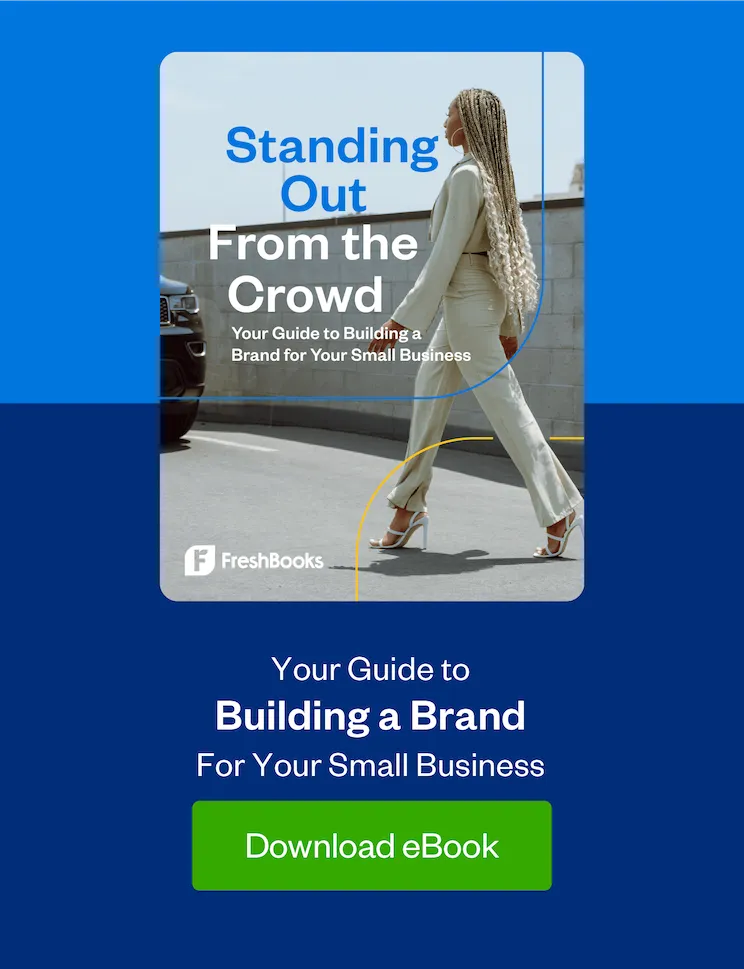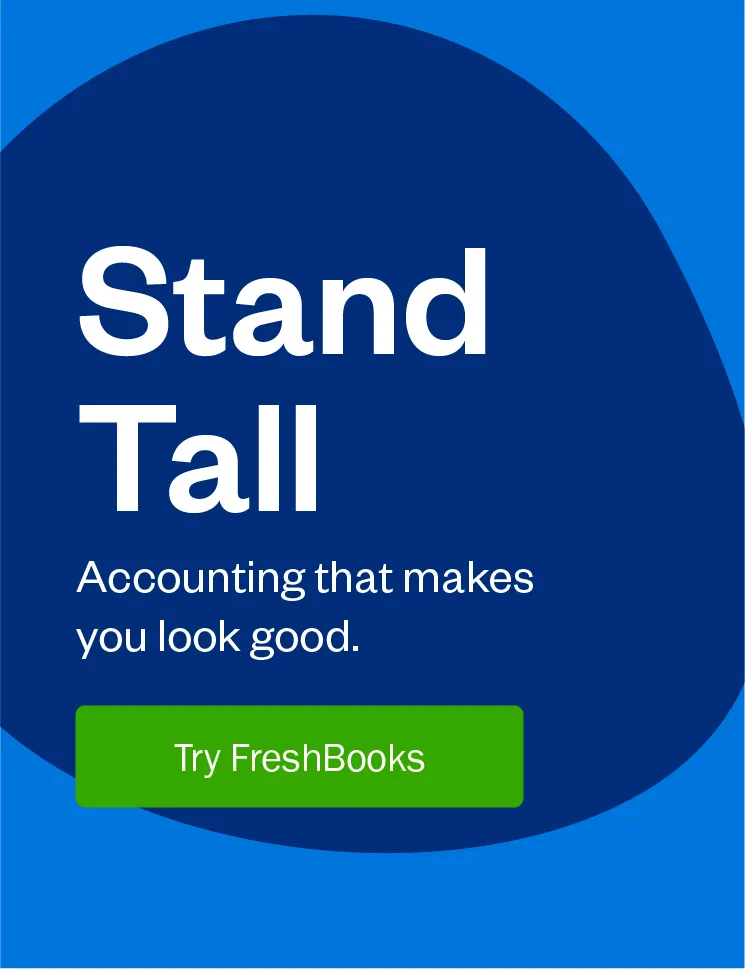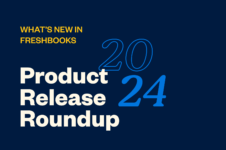Have you used marketing collateral to promote and grow your business? If not, you're missing out on valuable growth marketing tools.

Marketing collateral is an essential piece of getting the word out about your business, connecting with customers, and ultimately convincing them that your business is one that they want to engage with.
And in today’s hyper-competitive landscape, where consumers have a seemingly endless roster of options for the brands and companies they choose to do business with, it’s more important than ever to create marketing collateral that stands out and sends the right message.
But what, exactly, is marketing collateral? Why is it so important? And what’s the secret to using these assets to grow and build your business?
Before we get into the 6 important tips of how marketing collateral can help grow your business, let’s go over some of the what and the why of marketing collateral.
Or, click here to skip to the 6 tips.
Table of Contents
What Is Marketing Collateral?
Marketing collateral is essentially any marketing materials that help build brand awareness, deliver your company’s brand message, and connect with prospective customers—and, ultimately, transform those prospective customers into actual customers. from prospect to customer. Some common types of marketing collateral include:
- Digital marketing collateral
- Landing pages
- Digital content (for example, blog posts, online media or videos, or ebooks)
- Branded content (for example, partnering with an industry influencer for a branded video)
- Product comparison page
- Presentations
- Digital ads
- Testimonials
- Physical marketing collateral
- Brochures
- Business cards
- Product one-pagers
- Point of sales displays
- Print marketing campaigns
- Direct mail
- … and so on (yes, there are many types of other marketing collateral examples)
It sounds pretty straightforward. And once you understand how to do it, it is. But if you want to be successful and take your business to the next level, understanding the process of creating marketing collateral (and making sure that marketing collateral is effective) is an absolute must.
Why Are These Assets so Essential for Your Business?
There are a number of reasons marketing collateral is a non-negotiable for your business, including:
- Helps to drive sales: The right marketing collateral can fuel your marketing funnel, inspire your customers to take the leap, and engage with your business, which can drive sales, revenue, and customer engagement.
- Helps to increase brand awareness. Good marketing collateral gets the word out about your business and gives you the opportunity to share your story (for example, your company background or mission)—all of which help your company build brand awareness.
- Can help generate qualified leads. Marketing collateral is an excellent lead generation tool; with the right marketing collateral, you can not only connect with your ideal customer but get their contact information—which allows you to continue marketing to them in the future.
- Helps to educate customers on your company and product: Education is a huge part of bringing customers into your business. And effective marketing collateral is a great way to educate potential customers on your company, services, and products.
- Supports your marketing and sales teams. Your marketing team and sales team are out there connecting with customers and working to market and sell your product or service—and providing them with appropriate marketing collateral makes their job that much easier.
- Can help to overcome objections and drive buying decisions: Many customers have questions or issues that stand in the way of them engaging with your business. Through marketing collateral, you can proactively address those customer objections and issues—and influence buying decisions, and generate sales in the process.
- Creates more customer touchpoints: Most consumers need multiple encounters with your brand before they make a purchase. Marketing collateral allows you to have more customer touchpoints. Remember, the more exposure you have with your target audience, the more business you’ll drive as a result.
Clearly, marketing collateral is an effective tool in helping you reach your goals. But what kind of marketing collateral do you or your marketing teams need to get the job done?
The Different Types of Marketing Collateral (and How to Create Them)
Ever heard the saying “variety is the spice of life?” Well, variety is also the spice of marketing materials!
There are a TON of different types of marketing collateral and the best type for you is going to depend on your marketing goals, your customers, and your business model. There’s no one-size-fits-all approach. But there are definitely a few different types that have near-universal appeal.
Let’s take a look at some of the most common (and successful!) types of marketing collateral—and how to create them:
Brochures
Brochures are one of the most old-school forms of marketing collateral. But just because they’re old-school doesn’t mean they’re not effective!
Because they have multiple pages, brochures can be a great way to go into detail about your company’s products or services. And because they’re printed, they allow you to leave key information behind with prospective clients or customers—and will continue to market your product or service to them long after you’ve left the building.
Here are a few tips for creating effective brochures:
- Focus on the design. The right design can draw people in, grab their attention and get them to actually read the content. Make sure to use an attention-grabbing template or pass along your brochure design to a team of professionals
- Avoid big blocks of text. As mentioned, brochures offer a great opportunity to share a significant amount of information. But they shouldn’t read like a novel! Big blocks of text can feel visually overwhelming, so make sure your content is easily scannable
- Make sure your message reads loud and clear … Your customers shouldn’t have to go through your brochure with a fine-toothed comb to understand your marketing message. Make sure your core marketing message is the focal point of your brochure design
- … And add an incentive for good measure. Marketing materials are a great way to get the word out about your product or service—but they’re also a great way to drive sales. Consider adding an incentive (like a coupon or special discount) to drive sales activity.
Content Marketing
Content marketing can be defined as any content you create to help market your business. That includes blog posts, eBooks, e-mail newsletters, and white papers.
Content marketing is an effective way to increase brand awareness and get the word out about your business. It’s also a great way to add value to your existing customers and build customer loyalty.
Here are a few tips for creating content that drives sales:
- Ask for the sale. Content is a great opportunity to go in-depth on a particular topic. But if you don’t directly ask for the sale, you’re not going to get it. Make sure to include a clear call to action (also known as a CTA) within the body and at the end of your blog posts, eBooks, and other content
- Make it scannable. Again, big blocks of text can be overwhelming to readers. No matter what kind of content you’re writing—whether it’s a 500-word blog post or a 10,000-word eBook—it should be broken down into easy-to-scan, easy-to-digest sections
- Collect your customer information. Content offers a great opportunity to collect your customers’ contact information (e.g., by offering a free eBook download in exchange for their e-mail address)
Once you have a prospect’s contact information (with the right permission), you can use it to continue to market to them and, ultimately, close the sale.
Most customers need multiple encounters with a brand before making a purchase. Sales and marketing collateral allows you to have more customer touchpoints.
Infographics
An infographic is a visual representation of key information or data. And depending on what information or data you present, they can also make for great marketing collateral.
Here are some tips for creating effective infographics:
- Choose the right data. The effectiveness of infographics as marketing collateral is going to entirely depend on what data or information you use. Make sure the data you use in an infographic supports your marketing efforts. So, for example, if you were selling productivity software, you might include data or statistics on how your client productivity has improved since implementing the software
- Focus on design. The entire appeal of infographics lies in their design. They’re visually impactful and transform data into a visual story. Make sure you focus on the design and choose colors, illustrations, and a layout that packs a visual punch (and aligns with your brand guidelines)
- Make them shareable: Infographics can go viral (e.g., Jessica Hische’s “Should I Work for Free?” flowchart.) Making sure they “travel” with your brand information is key
Product Sheets
Product sheets are exactly what they sound like. They outline the key specs and details of a particular product.
They offer a great opportunity to educate your customer and answer any product questions
Here are a few key tips for using product sheets as marketing collateral:
- Include key details … The reason product sheets make for effective marketing material is that they demystify the product and give key information (like specs and functionality) necessary to help your customers make a decision about they want to move further in the buyer’s journey. Make sure to include all key details about your product
- … But don’t go overboard. That being said, there’s no need to write a full-on novel about your product. Keep your information tight and to the point. Bullet points work great!
- Answer common product questions. If there’s a product question you’re constantly getting from customers, chances are, whoever is reading your marketing collateral probably has the same question. Be proactive, think two steps ahead, and address the question directly on the product sheet
Case Studies and Testimonials
From a marketing perspective, there are few things more persuasive than social proof. If you can show your customers that your products or services work for other people, it’s going to be a lot easier to convince them that they’ll work for them, too.
That’s why case studies and testimonials are so powerful. Showcasing success stories from your current clients and customers helps build trust with potential clients and customers. And ultimately, that trust can go a long way in supporting your marketing efforts.
Here are a few tips to help you get the most out of case studies and testimonials:
- Get different kinds of customers. You want your case studies and testimonials to be relatable to as many people as possible. So if you have different types of customers, try to get a variety to share their experience. The more types of customers you highlight, the more potential customers they’ll connect with (and the more effective the testimonial or case study will be as a result!)
- Be specific. A “this product/service is great!” testimonial is fine. But if you really want to knock it out of the park, get your clients and customers to share exactly how your product or service has helped them. Did your software improve company productivity by 75%? Did your accounting services save their firm $10,000 at tax time? These details will elevate your marketing collateral to the next level
- Use real names and pictures. Case studies and testimonials are all about building trust. So make sure to use real client details, including their name and/or organization name. And, if possible, get a picture!
Additional Types of Marketing Collateral
We covered a lot of ground with the different types of marketing collateral, but they aren’t the only types out there! Depending on your product, service, and marketing goals, you might also want to consider an additional type of marketing collateral, including:
- Advertisements
- Social media marketing
- Educational videos
- E-mail marketing
- Sales scripts
- Competitor comparisons
Tips for Developing Assets That Effectively Market Your Business
Want more on creating marketing collateral that will help you hit your goals—whether that’s generating leads, building your email list, or driving awareness for your brand? Most marketing collateral is pretty straightforward, but here are a few tips to keep in mind throughout the marketing collateral creation process:
1. Show Your Point of Difference
Chances are whatever you’re marketing, there’s someone out there who’s marketing the same thing (or, at the very least, something similar). So if you want your marketing collateral to be effective, it needs to highlight what makes you different and unique. That includes explaining why your customers should do business with you instead of the competition.
Your marketing collateral should embody your point of difference (or, in other words, what sets you apart from the competition).
Do you have a different, cutting-edge style? Make sure you embrace that style in your marketing collateral design.
Do you have a patented technology your competitors have yet to leverage? Make sure you showcase that technology front and center.
Whatever it is that sets you apart, make sure it comes across in your marketing material.
2. Make Sure You Stay On-Brand
Marketing collateral offers an opportunity to strengthen your branding and your brand recognition with your customers.
This is why making sure all your marketing collateral is on-brand is an absolute must.
When you’re creating your marketing collateral, make sure that each element is aligned with your overall branding. Use your brand color palette, fonts, and voice. Include your logo and other key branding assets. When a customer looks at your marketing collateral, they should be able to immediately recognize it’s from your brand, even before they dig into the content.
3. See What Your Competitors Are Doing
You never want to steal an idea from a competitor. But you can certainly look to your competitors for inspiration!
Try to get your hands on your competitors’ marketing materials. What types of marketing collateral (both physical and digital marketing collateral) are they creating? How are they presenting their products or services? What about their collateral stands out and grabs the customer’s attention?
Remember, some of your prospects may be appraising you against your competitors, so you want to make the marketing materials easy to compare, but also distinct and better!
4. Use the Right Marketing Materials for the Right Customer
Not all marketing materials are created equal. And the marketing collateral that closes the deal with one customer might fall completely flat with another.
That’s why it’s so important to use the right marketing collateral type for the right customer.
If you’re a B2B company targeting clients in the manufacturing space, for example, technical product sheets or white papers could be effective marketing collateral. But if you’re a social media start-up targeting Gen Z consumers, content marketing or videos would probably be more effective.
The point is, it’s important to know your business, know your industry and know your customers—and then choose the types of marketing collateral to create accordingly.
5. Get to the Point
You believe in what you’re selling. So you might be tempted to include anything and everything that might also get your customers to believe in it along with you in your marketing collateral.
But fight that temptation! You don’t want your marketing collateral to read like War and Peace and you don’t want to overwhelm potential customers with every kind of marketing material under the sun.
If you want your marketing collateral to be successful, take a less is more approach—and get to the point as quickly and efficiently as possible.
6. Follow up
Marketing collateral will help educate your customers and get them excited about your products or services. And, in some cases, that might be enough to get them to engage with your business.
But many customers won’t be ready to make a decision after being exposed to a single marketing material—which is why following up is so important.
Make sure you’re continually marketing to your customers. That way, you have multiple opportunities to connect with them—and multiple opportunities to close a sale.
Use Marketing Collateral to Take Your Business to the Next Level
So whether it’s a blog post, a series of landing pages, or sales presentations for each target audience, Marketing collateral is a must if you want to take your business to the next level. And now that you have everything you need to create effective marketing collateral all that’s left to do? Get out there and start creating—and start marketing your business!

Written by Deanna deBara, Freelance Contributor
Posted on November 1, 2021


 5 Tactics to Build a Bigger Email List for Your Small Business
5 Tactics to Build a Bigger Email List for Your Small Business The Best Tools to Create Your Own Logo
The Best Tools to Create Your Own Logo How to Use Meetup.com to Grow Your Freelance Business
How to Use Meetup.com to Grow Your Freelance Business





